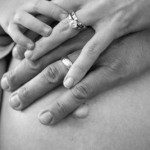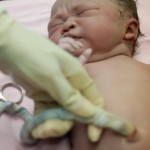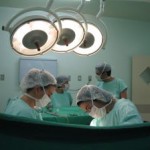Elective C-sections are a growing trend among mothers with 67% more first time mums in the U.S. choosing to have an elective C-section between 1991 and 2001. This is mostly because of our demanding careers and our constant need to be in control of every aspect of our lives, not to mention our insane fear […]
delivery
Breech births
Breech births are births in which your baby is born in the breech or bottom-down position, that means her bottom or feet will come out first instead of her head. About 25% of all babies will be in the breech position when their mother is 32 weeks pregnant, by week 40 of pregnancy only 3% […]

Treating PPH
PPH or postpartum haemorrhages are treated in stages depending on how major the PPH is and at what point the bleeding stops. Here is a step-by-step look at the treatment procedure of a PPH. 1. Injection or IV (intravenous) of either oxytocin or misoprostol, though oxytocin is the preferred medication, together with a massage of […]
Causes of PPH
Four main causes of PPH have been identified, they are as follows: 1. A uterine atony, in which your uterus does not contract and continues to bleed after birth (it is usually caused by placental retainment or an infection) 2. A retained placenta, or just some of placental and/or fetal tissue. 3. Trauma, which includes […]

PPH risk factors
There are several risk factors for PPH, but these risk factors tend to be few and far between. Below is a list of the possible risk factorsjust so you can get an idea. antepartum haemorrhage placenta previa multiple pregnancy pre-eclampsia nulliparity a previous PPH maternal obesity Asian ethnic origin C-sections (planned and emergency, though emergency […]
PPH (Postpartum haemorrhage)
A PPH, or postpartum haemorrhage, is the leading cause of maternal death across the world and occurs in about 5% of births. A PPH involves the mother losing more than 500 mL of blood after she delivers her baby. If she loses more than 1000 mL it is considered to be a major PPH. Once […]
Caul births
A caul is a membrane that may cover a newborn’s head at birth, but it is absolutely nothing to worry about as it is harmless and easily removed by your doctor or midwife. The caul membrane can either be part of the amnion of the amniotic sac or a separate membrane which forms during your […]

Tips for dads during labour
There are several things you can do during labour to not only help your partner throughout the process, but also to rack up some of those ever important brownie points. So take a look and get ready for a challenging, but incredible, experience! 1. Prepare yourself. Read up on the entire labour process and what […]

The second stage of labour
The second stage of labour is the pushing stage of labour and when your baby will be born! It begins once you are 10cm dilated and will continue until your baby is delivered into the world. This stage of labour lasts between one and two hours, but like in the first stage of labour, it […]
